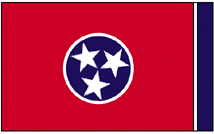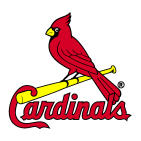[« Thought for the Day:] [On behalf of Reasonable Tenneseeans (both of us).... »]
11/22/2005: Hello...I'm the Wrath of God...
That First Thanksgiving by John Tierney cites an author (Charles Mann) who has written some most interesting bits about the Thanksgiving *myths* as taught to our children.
Tierney cites the usual myths like:”1. After a kindly Indian named Squanto taught the Pilgrims to grow corn, the Pilgrims invited the Indians to a meal to celebrate their friendship and mutual desire to live in harmony.
2. The Pilgrims held a feast to thank God, the real hero of Thanksgiving, who had earlier arranged for Squanto to be kidnapped, brought to Europe, taught Christianity and then miraculously returned just in time to help the Pilgrims.
3. The Indians, vicious barbarians awed by the Europeans' technology, sought an alliance with the Pilgrims to get access to their steel tools and enjoy the protection of their guns.
4. The Native Americans, a peaceable people who practiced sustainable agriculture and lived as one with nature, innocently befriended the Pilgrims without realizing these imperialists would destroy their lands and wage genocidal wars.
But, as Tierney explains –
“These stories all suffer from a warped view of Indians as naïfs that afflicted the first settlers and persisted for centuries among historians. It's the fallacy dubbed "Holmberg's Mistake" by Charles Mann in his new book, "1491," an intriguing revisionist history.
Holmberg's Mistake is named after an anthropologist in the 1940's who concluded that the Bolivian Amazon had long been a primeval wilderness inhabited by a few Stone Age tribes. But as later researchers found, that landscape had been transformed by a large, prosperous society that dug canals, raised earthworks and cleared forests to plant crops and build cities.
The Indians who greeted European colonists may have seemed like barbarians - or, in later mythology, like Noble Savages - but that was only because their societies had been decimated by epidemics brought by earlier Europeans. Before then, the Americas may well have been more populous than Europe, and in some ways more advanced.
The Indians on Cape Cod, who had more productive farm fields and ate more calories per capita than the typical person in Europe, were appalled by their unhealthy, scraggly and dirty visitors. The English guns were frightening at first, but the Indians quickly saw that the weapons were inaccurate and could be defeated by bows and arrows.
And Tierney continues with a description of the Indian who is legendary in facilitating the survival of the Pilgrims: Squanto. “…Tisquantum (the full name of Squanto) came from the Wampanoag confederation, which had long traded with the Europeans while forcibly preventing them from settling on Cape Cod.
…
This shrewd politician probably sought the alliance not so much for the Pilgrims' guns, Mann writes, but because his enemies would be reluctant to attack a group of whites for fear that it would complicate their own relationships with white traders. And his emissary, Tisquantum, far from a simple, kindly Indian, had his own plan for using the Pilgrims to become leader himself. Shortly after that first Thanksgiving, he tried unsuccessfully to trick the Pilgrims into attacking Massasoit.
"Tisquantum was to the Pilgrims what Ahmad Chalabi was to the Americans in Iraq," Mann said. "At a time when the Pilgrims were really clueless, he introduced them to his society and provided valuable information, but he definitely had his own agenda." Some Pilgrims remained clueless, attributing their survival to God and their guns, but others were more savvy. ..”
But, Mr. Tierney has *forgotten* a few of the best historical facts from Mr. Mann's research. The December issue of Smithsonian Magazine has an article from Mr. Mann, "Native Intelligence" (very informative and an excellent read by the way) that provides this intriguing revelation about Squanto: “More than likely, Tisquantum was not the name he was given at birth. In that part of the Northeast, tisquantum referred to rage, especially the rage of manitou, the world-suffusing spiritual power at the heart of the coastal Indian’s religious beliefs.
When Tisquantum approached the Pilgrims and identified himself by that sobriquet, it was as if he had stuck out his hand and said, Hello, I’m the Wrath of God.
So, give the full article a read through when it makes to the December on-line copy at this link.
And have a Happy Thanksgiving.
:-)
Karen on 11.22.05 @ 07:47 AM CST












